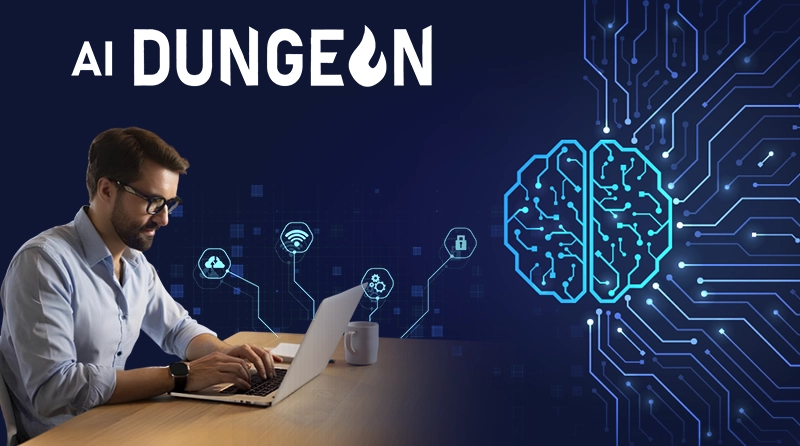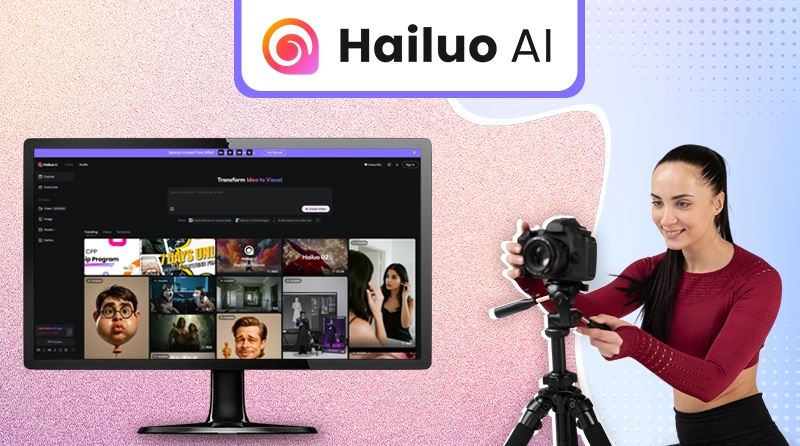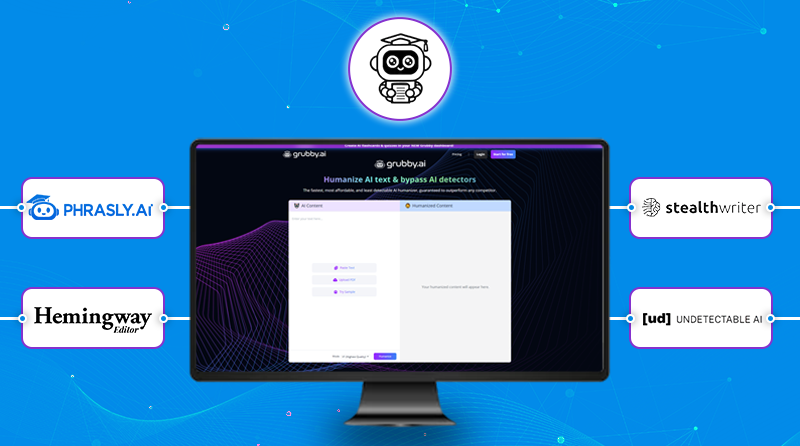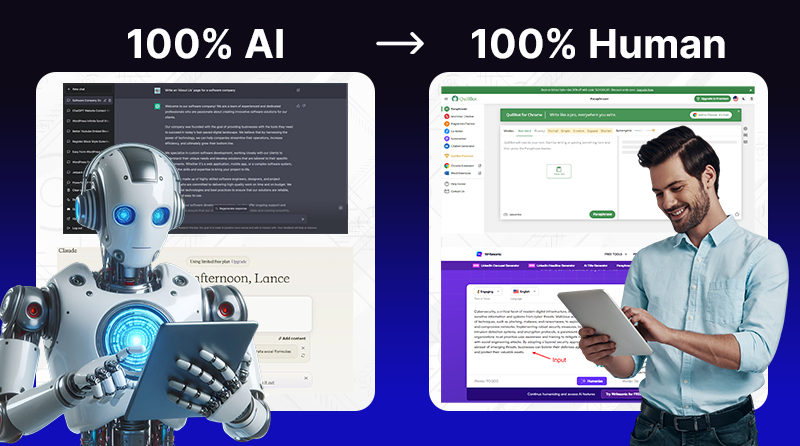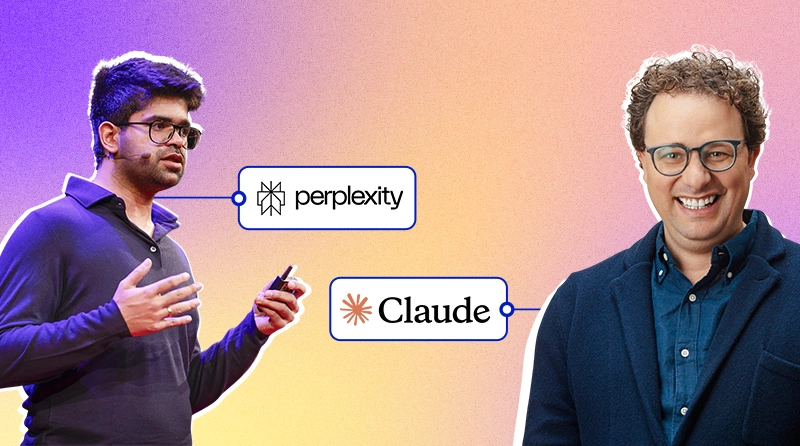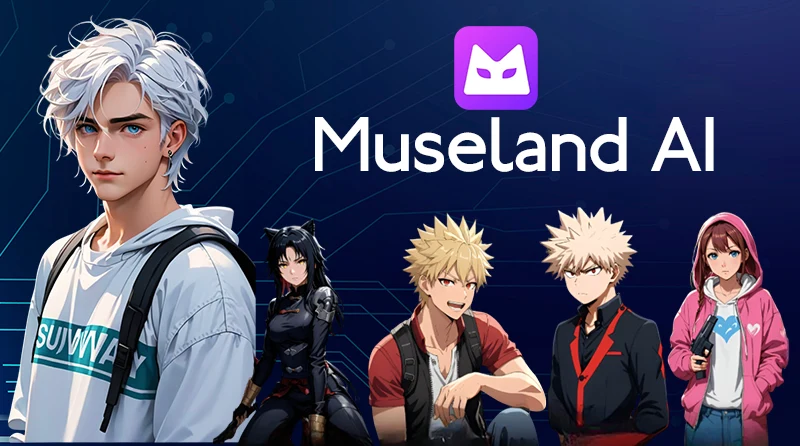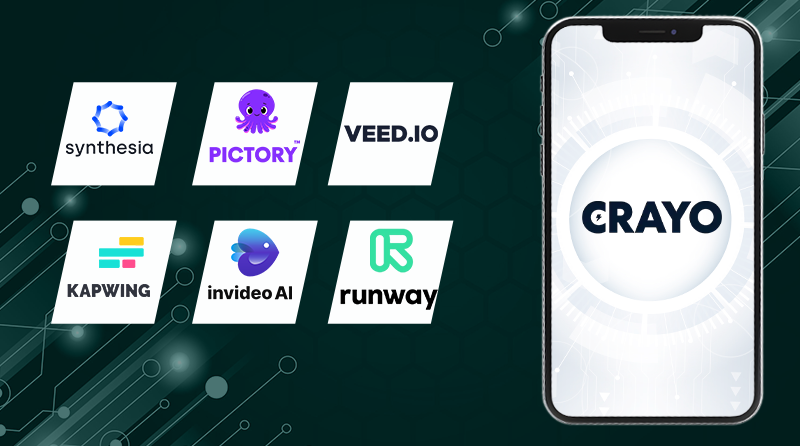Perplexity vs ChatGPT: Which AI Tool is Better for You?
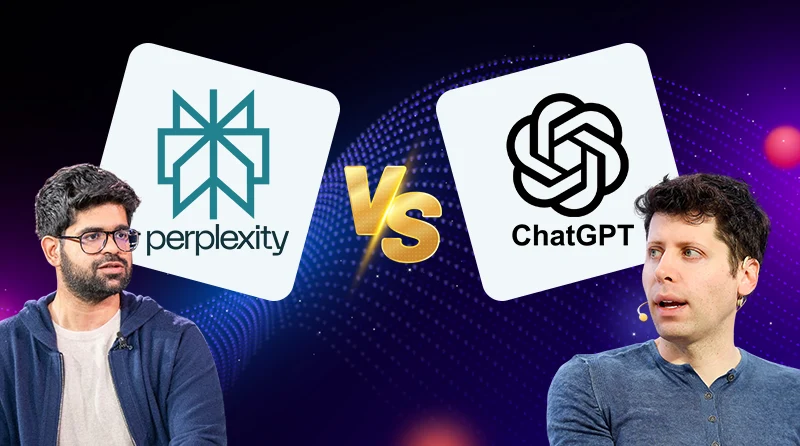
The way we search for information, create content, and connect online has shifted quickly in the age of artificial intelligence. Perplexity and ChatGPT are two of the most popular tools transforming these capabilities. For those testing out various forms of AI assistants, they may have asked themselves as they consider the two tools, “Perplexity vs ChatGPT – Which is better for me?”
There is no straightforward answer to this question, given the advantages of both tools. ChatGPT is a product of OpenAI that has become a household name for its conversational abilities, content creation capabilities, and applications across industries. Perplexity AI, perhaps previously unknown, is quickly generating buzz as a powerful AI-based search assistant that can produce fact-based, real-time answers with sourcing information.
In 2025, the competition between these two AI tools has intensified. ChatGPT continues to roll out relevant advancements such as multimodal abilities (text, images, and voice), while Perplexity AI focuses on factual accuracy and retrieval of real-time knowledge. Whether the user is a business, student, professional, or casual user, the core of the decision-making will come down to what is most desirable to the user: conversational creativity or reliable search insights.
This assessment isn’t solely about who emerges as more favourable. It is about determining which AI tool works best for your particular situation. Do you need a research partner who can cite sources and give accurate and current information? Or do you need a creative assistant who can draft emails, write blog posts, and even create code?
In this blog post, we will explain:
- The basics of using Perplexity versus using ChatGPT,
- The basic differences between the two,
- How both perform in the context of different scenarios,
- An overview of features and capabilities,
- Specific use cases wherein either Perplexity or ChatGPT work favorably.
Once we wrap the post, you will have a better understanding of which AI companion will be your best fit in 2025: Perplexity or ChatGPT.
Understanding Perplexity and ChatGPT: A Brief Overview
Prior to weighing the pros and cons, we need to be clear about exactly what Perplexity and ChatGPT are, as well as how they operate and why they enjoyed a surge in use among millions of users worldwide.
What is Perplexity AI?
Perplexity is an AI-driven search assistant that was released in 2022, designed to help users conduct online research more intelligently and reliably. When compared to traditional search engines that return a list of links, Perplexity answers users’ questions, providing short explanations while citing sources in real-time.
Perplexity uses state-of-the-art natural language processing (NLP) models as well as OpenAI’s underlying GPT technology, but its real value represents the unique way it brings language model intelligence together with connected access to the internet. Specifically, this means that Perplexity can draw upon the latest data, statistics, and news, something that typically makes it an invaluable tool for researchers, fact-checking, or simply staying informed.
Highlights of Perplexity include:
- Representing answers with source materials: Each response includes references in case you’d like to verify.
- Real-time search capability: Everything is updated continually based on current events.
- Interactive Q&A: You can ask follow-on questions or work your way deeper into the topic via natural questioning.
- Easy to use: Perplexity is clean and minimal in its layout.
To put it simply, Perplexity is nearly the middle ground between Google and ChatGPT: an AI chatbot with conversational skills but researching the accuracy of a search engine.
What is ChatGPT?
ChatGPT is one of the most recognized AI-powered answer engines in the world, developed by OpenAI and published in late 2022. It became widely popular due to its human-like conversation and responses across a wide range of contexts.
Unlike Perplexity, ChatGPT is largely built to facilitate a conversation and generate written material. It can write essays, plans of business, poetry, code, translate language, and even brainstorm. It is widely used by professionals, enterprises, educators, and the general public because of its versatility.
ChatGPT went through significant updates over the years:
- ChatGPT-4 Turbo and GPT-5 (2025) – Faster, more accurate, and multimodal.
- Plugins and integrations: To allow it to connect with tools like Slack, Microsoft Office, and even search engines.
- Customization with GPTs: Users can create custom and specialized ChatGPTs to fit their needs.
- Multimodal capabilities: Can accept input in text, image, and voice to enhance interaction.
In short, while Perplexity is meant to be a research assistant with reliability, ChatGPT is a creative multitool and an assistant.
Why They’re Often Compared
Perplexity and ChatGPT are frequently compared because they are both AI-assisted assistants with a similar purpose, but those purposes are somewhat different. The typical user looking for real-time, accurate data is generally going to prefer Perplexity, while the typical user looking for external creativity and versatility is going to prefer ChatGPT.
Despite overlaps between the tools for use cases such as answering questions, summarizing content, or facilitating brainstorming, each tool is crafted around a different core purpose.
- Perplexity = Accuracy + Sources + Real-time knowledge
- ChatGPT = Creativity + Conversation + Versatility
With this basic understanding, let’s turn our attention to comparing each tool’s performance by comparing the features and subsequent real-world usability.
Key Differences Between Perplexity and ChatGPT
If we disregard the brand names and headlines, the contrast between Perplexity and ChatGPT comes down to their design priorities. Perplexity prioritizes accuracy, traceability, and real-time characteristics, while ChatGPT prioritizes conversational fluency, creativity, and extensibility. Below, we have explained the functional differences so you, the reader, researcher, or decision-maker, can quickly work out the respective tools for resolving different types of problems.
1. Core Purpose & Design Philosophy
Perplexity: Designed as an AI-first search assistant. Its design goal is to answer factual questions quickly and point to references, so users can be sure of the claims. Another quick way to describe it is fast, short, citeable answers for, e.g., deep research, up-to-date information or event news.
ChatGPT: Designed as a general-purpose conversational engine. It is optimized for tasks that require generative creativity (writing, coding, role-playing, tutoring), longer engagement, content creation, and brainstorming.
2. Knowledge Access & Lack of Freshness
Perplexity: Perplexity typically has real-time web capabilities or tight search integration, so it can provide you with up-to-the-minute facts and news and provide you with sources. This is great for things that are time-sensitive.
ChatGPT: Traditionally, the model has been trained on a time frame and leaned on plugins or connected search to access current data. If plugins are not enabled, ChatGPT is more capable of synthesizing than retrieving current data.
3. Openness and Attribution of Sources
Perplexity: Emphasises source-verified action. The responses typically include a reference to the original articles or pages, which is useful for researchers, journalists, and students who need to double-check facts.
ChatGPT: Provides fluid responses, but typically omits citations. Custom workflows or plugins are the only ways to achieve consistent source attribution.
4. Creativity and conversational flair
Perplexity: Gives off an air of conversation while being succinct. It is intended to give a succinct, accurate response before cutting off. It permits one brief follow-up as well. Longer creative sessions are not intended to be optimized by it.
ChatGPT: Has impressive long-form hunches, along with storytelling, brainstorming, and nuanced prompts. If you want a blog post, a script, or are rewriting something creatively, ChatGPT is usually the better starting point.
5. Factual Accuracy and Hallucination Behaviour
Perplexity: As it ties answers to cited sources, the problem of unsupported hallucinations is much diminished. Answers are usually based on citations, though errors can still occur regarding citations, potentially based on low-quality articles or misreading of the article.
ChatGPT: Although it is powerful in providing plausible text, ChatGPT sometimes hallucinates key details (dates, figures, citations). All factual statements need to be verified, especially for high-stakes use.
6. Extensibility, Integrations & Developer Tooling
Perplexity: Extensibility focuses mainly on search-like features, and therefore, integrations depend on the version of the products being compared. It is also quickly adding developer-friendly API’s for embedding answers into applications, whereas historically the focus was less on a broad plug-in space.
ChatGPT: Strong plugin ecosystem and customization options (custom GPTs, API access, third-party plugins). This allows ChatGPT to fit nicely into workflows (CRMs, IDEs, content pipelines).
7. Multimodality & Advanced inputs
Perplexity: Mainly text and web content focused, but some versions incorporate snippets, PDFs, or search results directly.
ChatGPT: Increasingly multimodal; in certain versions, it can read images, execute code, and speak. It works better for multifaceted jobs that use different kinds of media.
8. UI/UX & Interaction Model
Perplexity: Clear, search-focused user interface with concise responses and prominent citations, ideal for quick searches.
ChatGPT: A chat-focused user interface that promotes communication. For longer sessions and iterative jobs where the outputs will be improved across several inputs, this platform is beneficial.
9. Privacy, Enterprise Features & Data Handling
Perplexity: Offers enterprise and privacy controls for some levels; as it is relying on live web sources, the privacy variables are dependent upon the route that is used to log and route queries.
ChatGPT: Enterprise versions (or API contracts) can offer data residency, compliance, and admin controls; many organizations are adopting ChatGPT’s enterprise offerings into internal workflows.
10. Cost & Access Model
Perplexity: Often has free tiers for casual use and paid upgrades for heavy or API use; pricing is generally for the value of live-query query responses.
ChatGPT: ChatGPT is available in free and paid versions, and there will be costs if you use the API. Whatever version you use, the costs scale based on the degree of customization, use of plugins, and size of the model. In particular, ChatGPT’s vast functionality can make it more costly when inputting heavy generative workloads.
When Should You Choose Which? A Simple Guidance?
Choose Perplexity if: you need fast answers, with source citations, for research purposes, fact-checking, or news.
Choose ChatGPT if : you need content creation, ideation, conversation, or any of these in extended workflows embedded in your app.
These distinctions aren’t rigid distinctions (both tools are moving quickly), but they help clarify why one feels like a research partner while the other feels like a collaborative creative partner! See what’s coming next: we will pit them head-to-head against one another to see how they perform in relative real-world scenarios (speed, accuracy, creativity, and robustness).
Similar Guides:
Performance Comparison: How Do Perplexity and ChatGPT Stack Up?
When comparing Perplexity to ChatGPT, most people focus on how they fit into actual problems, like:
– Do they give accurate answers?
– Are they quick?
– Can they appropriately handle complexity?
To answer this question, we will break down performance into five key components: speed, accuracy, depth, adaptability, and the user experience.
1. Speed of Responses
- Perplexity: It is optimized for short, precise, and quick answers. Since it is functioning like a search engine with some built-in summarization, it usually provides answers in just a few seconds. Usually, a short response is provided from a source or sources in a matter of seconds.
- ChatGPT: Also fast, but the response speed can vary depending on the model version (GPT-4 or GPT-5) and the complexity of the request. For longer-form content (essays, blogs, etc.), the content takes slightly longer, but for these complex requests, both time and depth will be worth the wait.
Verdict: Perplexity is faster for fact-based queries. ChatGPT is faster for complex, multi-paragraph outputs.
2. Accuracy of Information
- Perplexity: Its strongest point is factual, or evidence-based accuracy. Since it is pulling from live web sources, each response is typically followed up with some citations and references that allow users to confirm what is being said. This results in decreased hallucinations on the part of the AI. Errors can still occur, however, if the referenced sources contain inaccurate information/manipulations.
- ChatGPT: Very adept at generating readable (and often highly persuasive) content, but can be prone to “hallucinations”, which are confident-sounding responses that aren’t factually accurate (if not linked to plugins or browsing, it has no access to current information).
Verdict: Perplexity is a better choice for reliable references to current and factual information, while ChatGPT is the superior choice for reasoning and synthesizing knowledge.
3. Depth of Understanding
- Perplexity: Answers are succinct and straightforward. Perplexity is good for quick information access, but you would not want to use it for detailed conceptual exploration.
- ChatGPT: Requires some formatting. Responses are more layered with nuance. ChatGPT is able to describe concepts, ground an explanation in the “why” of facts, and engage in back-and-forth dialogue over multiple iterations. This level of engagement is a major advantage if it is for academic, professional, or creative purposes.
Verdict: ChatGPT is better at engagement/depth/nuance.
4. Adaptability to Complex Tasks
- Perplexity: Only really works when you ask factual, specific, or structured questions. It does not adapt as well to vague or open-ended requests. Perplexity prioritizes fact over creativity.
- ChatGPT: Very adaptable. Whether you are writing some code, writing a business plan, or simulating a conversation with a historical figure, ChatGPT has a surprising amount of versatility in adapting to user intent.
Verdict: ChatGPT is a more friendly option for creative, exploratory, and open-ended tasking.
5. User Experience (UX)
- Perplexity: Provides a clean and search-like experience. Each result is concise, clickable, and easy to validate. The presentation evokes a NextGen search engine more than it does a conversational chatbot.
- ChatGPT: ChatGPT gives priority to conversation. The interface is geared toward lengthy discussions back and forth, which feels more natural when brainstorming and finding solutions.
Verdict: Perplexity is better for research and a user experience weighted toward UX; ChatGPT is better for dialogue or conversation as a user experience.
6. Reliability Across Domains
- Perplexity: Particularly strong in academia (research), accessible fact checking (i.e. how far is Mykonos from Athens?), breaking news reporting, and industry trend analysis (like a consultation).
- ChatGPT: Strong in writing, tutoring, brainstorming, customer support, and workflow automation.
Head-to-Head Example
Imagine you asked both tools the question: “Summarize the iPhone 16 features released this month.”
- The response from Perplexity would be a short summary with the features described as (battery, camera, processor upgrades) with links to local tech news sites.
- ChatGPT would give you the version of each feature, how it compares to previous models, and likely (if analyzed) discuss how it impacts the consumer. ChatGPT might not provide you with the latest announcement unless web browsing is active.
This demonstrates their core difference: Perplexity = live facts, ChatGPT = contextual depth.
Perplexity is therefore the best option if you value speed, factual correctness, and citations. ChatGPT is unique if you require detailed explanations, originality, or flexibility. In fact, a lot of professionals utilize both simultaneously: ChatGPT to convert research into structured text and Perplexity for research.
Features and Capabilities: Which AI Tool Offers More?
Perplexity and ChatGPT have both made substantial progress since their respective launches, continuously adding capabilities to remain relevant. While both make use of sophisticated AI models, their presentation to the user is very different. Here, we will consider both models across the most pertinent features.
1. Knowledge Base and Data Access
Perplexity:
- Takes advantage of web capability, pulling live data from authoritative sources on the web.
- Nearly every response is met with sources, which bolsters Perplexity’s use when considering fact-based content.
- The incorporation of live data improves on rapidly evolving topics, such as news on the stock market, sports scores, or the latest medical research.
ChatGPT:
- Trained, mostly, on a large body of written text, as of its last technology upgrade; though browsing plugins can extend this capability.
- Barring accessing live data natively, ChatGPT is quite adept at synthesizing knowledge to explain topics in-depth and connect those ideas across disciplines.
Edge goes to Perplexity for accuracy while using live information; ChatGPT for comprehensive, detailed synthesizing.
2. Conversational Abilities
Perplexity:
- Responses are short and precise, human, and fact-based.
- Interactions feel unrewarding and more like querying a search engine than engaging in a prolonged dialogue.
- Not as capable of maintaining context across dialogue, which reduces the ability for back-and-forth turns in conversations.
ChatGPT:
- The design is conducive to very natural, human-like engagement.
- ChatGPT is able to retain context and iterate through multiple turns in conversation, making it more useful for brainstorming, tutoring, or even storytelling purposes.
- Allows users to refine responses iteratively and even adopt custom tones or personas.
Edge: ChatGPT, hands down, for dialogue-rich tasks.
3. Content Generation
Perplexity:
- Perplexity has a strength in summarizing information and writing texts that are concise.
- It has certain limitations when it comes to creative and longer-format content when writing texts such as blogs, scripts, and poetry.
ChatGPT:
- ChatGPT is a writing powerhouse and can write pieces such as essays, blogs, ad copy, code snippets, lesson plans, etc.
- Its versatility makes it the best choice in writing for marketers, developers, and writers.
- Latest versions have multimodal types of writing, which allow you to use text writing combined with other visuals or code writing.
Edge: In “creative” or longer formats of writing, ChatGPT is clearly dominant.
4. Multimodal Capabilities
Perplexity:
- Perplexity is very much focused on the text, although it does integrate documents, links, and references to sources.
- It does not yet have more advanced multimodal support, such as voice or image input.
ChatGPT:
- ChatGPT supports multimodal interaction in the latest versions (text + image + voice)
- Users can upload images for analysis, chat with the model, or incorporate multiple types of input.
- This versatility creates many possibilities for professionals in fields like design, classrooms, and customer service.
Edge: ChatGPT has the edge here with users who require cross-media capabilities of AI.
5. User Interface and Experience
Perplexity:
- The user interface is very simple and minimalistic; it is clearly search-based.
- The responses are clear and organized, and come with citations included below; even if the links don’t have citations, they make it clear where they are going and do include sources for where they got the information.
- It is a great tool for researchers or other users who value form and clarity over conversation.
ChatGPT:
- An Interactive Interface for conversational back-and-forth interaction.
- It allows users to ask follow-up questions and reshape any answer.
- Custom GPTs allow users to customize the chatbot to do a specific task (e.g., act as a personal trainer or coding assistant).
Edge: Perplexity, for research efficiency; ChatGPT for engagement in conversation.
6. Customization and Integrations
Perplexity:
- It has limited ability to customize, but allows some evolving.
- There are APIs available to embed its fact-checking AI into non-Perplexity apps.
- It aims mainly to improve accuracy in Q&A.
ChatGPT:
- Custom GPT space where users can train a small GPT to do a more niche thing.
- Integrates into a much broader ecosystem (Slack, Google Drive, Microsoft Teams, etc.).
- Enterprise gets admin controls, compliance features, and workflow automations.
Edge: ChatGPT is much friendlier to customize and integrate within workflows.
7. Pricing and Accessibility
Perplexity:
- Strong free tier with a premium tier for greater usage.
- Pricing is often affordable for many individual researchers and students.
ChatGPT:
- Offers free tier, but advanced versions (GPT-4/5, multimodal tools, plugins) require Plus or Enterprise plan.
- It may be more expensive depending on the levels of intensive use, ie, the number of queries.
Edge: Perplexity is the better option price-wise, but ChatGPT offers more value for professionals who require advanced capabilities.
Features Verdict
- Select Perplexity if you want a clear, research-driven interface with quick, accurate, and cited information.
- Select ChatGPT if you’re looking for multimodality, inventiveness, adaptability, and integrations with everyday tasks.
Perplexity can be thought of as the AI equivalent of Google Search 2.0, whereas ChatGPT functions as a personal assistant and content generator combined.
Use Cases: When to Choose Perplexity vs ChatGPT
Perplexity and ChatGPT are both powerful AI systems, though they excel in different situations and knowing when to use each can help save time, ensure accuracy, and boost productivity.
When to Choose Perplexity?
Perplexity is specifically designed for use in market research and fact-oriented tasks where someone wishes to provide a relevant, credible response, complete with citations. Some examples of this use case include:
- Academic Research: Students and researchers find Perplexity useful for generating citation events that offer a source for the validation of facts.
- News & Events: Journalists and readers who need current and relevant information can use Perplexity for web-based real-time information.
- Fact-Checking & Verification: Business professionals, analysts and others who would like verifiable data points to reference in their reports will find Perplexity a good reference tool.
- Quick Summation: Providing a summary or explanation to someone who wants an answer rather than a conversation is the simplest use.
Perplexity is like having an AI research assistant, always available to provide quick, factual, source-backed answers.
When to Choose ChatGPT?
ChatGPT is great in creative and conversational scenarios where versatility or depth is valuable. Some examples are:
- Content Creation: Marketers, writers, and bloggers utilize ChatGPT to draft blogs, social posts, scripts, or ad copy.
- Learning & Tutoring: Students using ChatGPT to help break complex concepts down, problem-solve, or study for exams can find it helpful.
- Business Functioning: ChatGPT is used by professionals to help with drafting emails, writing reports, writing proposals, and coding.
- Creative Thinking: ChatGPT is great for brainstorming ideas, storytelling, role-playing, creating scenarios, etc.
- Workflow Automation: ChatGPT and plugins can make it a customizable assistant for all tasks an enterprise would need.
ChatGPT is not just an answer program; it is a flexible collaborator, meaning it can be adjusted for nearly any user need.
The Hybrid Approach
Many users do not pick either ChatGPT or Perplexity; they use both. For example, a researcher may use Perplexity for facts with citations, then use those sources to get ChatGPT to write a polished article or presentation.
Conclusion: Which AI Tool is Right for You?
When comparing Perplexity and ChatGPT, it’s not about proclaiming one a winner over the other; it is about understanding that each product was developed with distinct advantages.
- If your main concern is accurate information, timeliness, and transparency of sources that allow for fact-checking, Perplexity is undoubtedly your best choice. In many ways, it resembles a smarter search engine designed for research-based projects, academic work, and ‘fact-checking’ environments. Perplexity shines in scenarios characterized by rapid and frenetic change in subjects, such as technology, business, or news updates. Users with a minimalist view of text and efficiency are particularly attracted to Perplexity’s elegant, to-the-point style.
- ChatGPT is a true jack-of-all-trades; it is excellent for creativity, conversation, and flexibility in tone. Whether you’re creating a blog post, brainstorming ideas for marketing, coding, or even role-playing, ChatGPT performs well with complex, multi-turn dialogues while revising other styles and tones. ChatGPT is also increasingly effective with multimodal formats, even in integrations that allow the use of screen-sharing.
We suggest you don’t have to pick one tool or another, and that is the good part! Many users derive the best experience by pairing the two: use Perplexity to aggregate facts (or for accuracy of any sort), and use ChatGPT to produce outputs (output can be defined loosely as many styles). This way, you are ensured some degree of accuracy while allowing for creativity.
As we continue on this journey together into a new wave of artificial intelligence in 2025, it’s a matter of personal preferences and practicalities for you:
- Select Perplexity if you are a fact-checker or researcher.
- Select ChatGPT if you’re an entrepreneur, professional, or creator.
- Combine the two to achieve unparalleled productivity if you want the best of both worlds.
To put it simply, there is only one option that is appropriate for your objectives.
Frequently Asked Questions
1. Is Perplexity better than ChatGPT for research?
Yes, Perplexity is a better option for research since it provides real-time, source-cited answers.
2. Can ChatGPT access the internet like Perplexity?
By default, no; while ChatGPT cannot automatically pull live data, it can with plugins or integrations.
3. Which tool is more cost-effective, Perplexity or ChatGPT?
Perplexity provides more value for casual use based on facts, whereas ChatGPT is worth it for more professional uses and is more useful for advanced features..
4. Should I use both Perplexity and ChatGPT together?
Yes, there are a lot of users who use both platforms, using Perplexity for obtaining facts, and ChatGPT as it relates to creative endeavours.
5. Can Perplexity handle creative writing tasks like ChatGPT?
Not really; Perplexity is focused on factual answers, while ChatGPT is more focused on creative content.
6. Which AI tool is better for businesses and enterprise use?
ChatGPT is generally better due to integrations, customization, and workflow automation capabilities.



